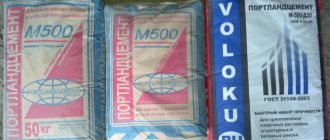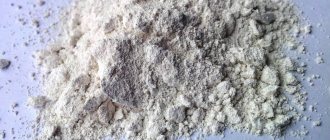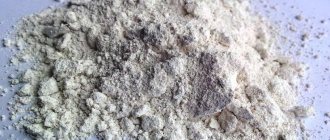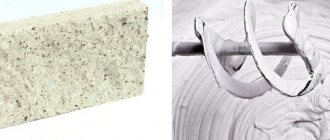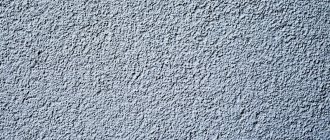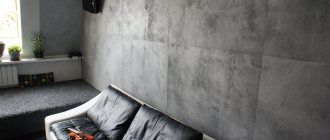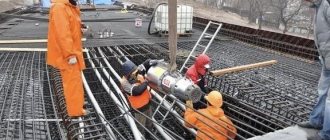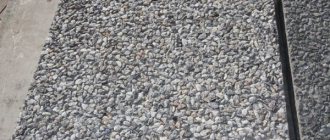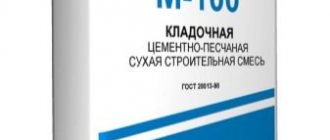The white variety of Portland cement has been available to humans for over a hundred years. A characteristic feature of this material is its aesthetic and decorative features. The first types of cement were produced of low quality, but nowadays technologies are being improved and new equipment is appearing. All this “revived” white cement, which, moreover, became of better quality. Now, in addition to the decorative component, the material has good technical properties, namely, it is able to withstand high loads, which has affected its distribution.
Figure 1. White cement
Where is white cement used?
White cement is widely used. It is found in almost every building, and sometimes its use becomes the only solution. Areas of application:
- A variety of building elements are made from it. White cement is often used for finishing facades. It makes the structures under construction more durable and expressive;
- Thanks to its good technical characteristics, the material is in demand for work both outside and inside buildings. The fact is that the color of white concrete does not change after years of use, despite the aggressive effects of various atmospheric phenomena;
- white cement is popular among architects and manufacturers of cement products, as it makes it possible to turn interesting ideas into reality. So, shapes, fillers, and colors change. The hardened surface is also treated in different ways;
- it is used to produce ready-made plaster, mortars, dry mixtures and materials for filling joints;
- develop elements of park and garden furniture, artistic products;
- White cement is used to make flooring materials, for example, colored paving slabs;
- applicable if it is necessary to restore a historical relic.
Important! The wide range of applications is explained both by the technical characteristics of the material and by its visual appeal - whiteness. To maintain the whitish tint, no additional protective measures are required.
Areas of use
- Production of reinforced concrete forms and structures. The dry binder is used in the production of staircases and decorative interior elements.
- Preparation of mixtures for self-leveling floors. When forming a concrete mass, fillers are added: purified quartz or washed river sand, marble flour. This type of concrete differs from standard concrete in the absence of coarse crushed stone and, accordingly, in high shrinkage.
- Production of facing bricks.
- Production of paving slabs and curbs. They can be either completely white or painted with special dyes.
- Formation of mixtures for masonry mortars and joint grouts. As a filler, gypsum or crushed chalk is added to the composition of the latter. The hardening speed depends on this.
The scope of application of cement also includes the creation of cast sculptures for outdoor use. Such objects can last at least 10 years.
Advantages and disadvantages
Figure 2. Application of white cement
Compared to gray varieties, white cement has a lot of positive properties that only expand its scope of application:
- hardens quickly. 16 hours after pouring, the material gains 60% strength. Gray cement requires a minimum of 3 to 4 weeks. Thanks to the rapid hardening of concrete, builders gain a lot of time;
- high dispersion index, protecting products from negative atmospheric influences. The color of the cement will remain the same, even if the material is exposed to snow, rain, or sunlight for a long time. Natural factors of destruction also appear much later than in classical concrete;
- Compared to gray cement, white has twice the resistance to cracking. The fact is that the material is made from high-quality clinker with less added impurities;
- environmentally friendly. The raw materials for production are those that occur naturally;
- attractive appearance. White surfaces are easier to combine with finishing, and they look brighter than being gray.
If you add natural pigments to the mix, you can paint the product a different color. Options for additives and what color they give: red lead, ocher – yellow, cobalt – blue, manganese carbonate – black.
One of the significant disadvantages of white cement, which is also called decorative, is its high price (almost 25% more expensive than gray cement). Also, mixtures, both ready-made and dry, need protection from foreign inclusions. That is, you cannot prepare cement using dirty tools with rust. Reinforcement work also becomes more complicated - the rods must be protected from rust.
Due to the high cost and complexity of work, in Russia 1-2 bags of white are required per 100 bags of gray cement. However, construction and finishing technologies do not stand still, and they are pushing the industry towards new trends and solutions.
Figure 2. White cement buildings
Colored decorative cements: characteristics, composition, features
Colored construction powder is obtained by grinding together gypsum, clinker and light-resistant pigments with the addition of special additives. In industrial production conditions, products are produced in yellow, green and black colors. For this purpose, carbon black, chromium oxide and ocher are used.
During production, colored decorative cements acquire the same composition and characteristics as their white counterpart.
Colored cement, as well as white, is most often used for the manufacture of concrete products with the texture of the required color.
To obtain other colors, pigments are used, which can also be used at home. For example, eskolaite gives surfaces a pistachio tint, manganese creates colors from blue to black, and cobalt creates brown.
During the technological process, colored decorative cements acquire the same characteristics, composition and features as their white counterpart.
Manufacturing technology
In order to obtain white cement, you need to grind low-iron white clinker, mineral gypsum additives and include colored pigments in the composition. The following materials are used as raw materials: limestone, clay, sand (they should have a low content of titanium, iron and manganese).
The raw materials are annealed using ash-free fuel, that is, fuel oil or gas. To simplify this procedure, a mineralizer in the form of fluorspar or sodium silicofluoride is added to the mixture. White cements differ in the degree of whiteness. This parameter depends on the characteristics of the clinker used in production.
First, the composition is fired at a temperature of +1200 degrees Celsius, then, to make the finished solution strong, it is cooled to +200 degrees. By using special mills, it is possible to achieve fine grinding of clinker - 4500 cm2/g (for the gray variety this parameter is 3500 cm2/g).
Depending on the degree of moisture of the raw material, two different methods are used to produce such material as white cement:
- dry. It is used if the raw materials have a low degree of humidity. In special shaft furnaces, the components are ground, dried and mixed. The resulting clinker is fired at a temperature of +800 degrees;
- wet. In this scheme, hard components are crushed with special mills, soft components are crushed in mash jars with the addition of water. Next, the wet raw material is dried, ground and mixed with other components, similar to the dry method.
Important! The finished material differs in the degree of whiteness and according to this indicator is divided into three classes. If desired, you can enhance the decorative effect by adding dyes and marble chips to the cement.
Compound
Low iron clinker is the basic raw material for the production of white concrete and cement. It does not contain chromium and manganese, is enriched with mineral additives, contains limestone, gypsum, and hypochlorous layers, which are responsible for lightening the material and giving it a white tint.
When producing white cement, components are used that do not contain substances that can color the finished material (especially iron oxide). During the production process, the presence of titanium, chromium and manganese oxides in the composition is taken into account.
Chalk or pure limestone is used as a lime component; kaolin production waste (shlinker) or kaolin clay can be used as a clay component. To increase the silicate module, fine-grained quartz sand or other pure rocks containing a high percentage of silica are introduced into the clinker mixture.
The lime ingredient should not contain more than 0.1% iron oxide. If the iron oxide content in the clay component is less than the permissible value, then in the lime component its percentage may be slightly higher. But in both ingredients the presence of small amounts of chromium and manganese oxide is allowed.
Cement acquires its strength after the firing procedure and subsequent rapid cooling. For burning clinker, liquid fuel or gas is used, which does not form soot or ash when burned.
White cement brands
The grade designated by the letter “M” characterizes the strength of cement. The following brands are available:
- M400 - of all possible ones, it has the lowest strength, shrinks and has low sulfate resistance;
- M500 – durable and frost-resistant mortar with low deformation;
- white cement class M600 is frost-resistant, hardens quickly and practically does not “shrink”;
- M700 is a modern and innovative variety, a kind of European standard.
In finishing and construction work, the most popular grades are M500 and 600.
Description
The distinctive characteristics of the material are:
- White color. In building materials, light shades are achieved due to the composition of the raw materials and special production technology.
- Main component. The main component of the material is low-iron clinker, to which crushed gypsum, kaolin, limestone (crushed) and chlorinated salt are added in precise proportions and sequence.
- Combination of components. The characteristic white color is obtained through a combination of chalk and kaolin. With the right choice of raw materials, in particular components, the finished material contains very little manganese and coloring oxides.
- Strength. White Portland cement differs from gray cement in its high level of compressive strength (up to 60 MPa). This strength is achieved due to the sharp cooling of the clinker-type mass after firing in an environment in which there is no oxygen.
Please note that when burning clinker in a kiln, liquid fuel or gas burners are used, which do not produce soot and ash. This is a fairly important condition, since if the technology is followed, white M500 cement with a characteristic color is obtained.
In accordance with the strength parameters, there are:
M400 - medium hardening speed, medium and high shrinkage deformation, low level of sulfate resistance, high level of frost resistance.- M500 – medium hardening speed, low shrinkage deformation, medium level of sulfate resistance, high level of frost resistance.
- M600 - quickly hardens, slight shrinkage deformation, low level of sulfate resistance, high level of frost resistance.
Based on the reflection coefficient (degree of whiteness), the material is divided into three grades:
- The first is from 79 to 85%.
- Second – 74%.
- Third – 67%.
Belonging to one of the described varieties and the degree of whiteness are indicated on the packaging. The scope of application, the cost of the material and the final type of products made from the selected cement will depend on this. Now in construction markets you can buy Turkish white cement brand M600 “super white”, the reflection coefficient of which (!) is 90%. For a 50 kg bag you will have to pay from 750 to 800 rubles.
Application tips from professionals
To achieve the best results, you need to know the basic rules for working with white cements:
- When preparing raw materials with your own hands, you should make sure that the containers and working tools are clean (not covered with dirt, dust, rust). The same goes for a concrete mixer;
- mix and moisten the solution using only clean water;
- If the structure being built is reinforced with steel reinforcement, it is additionally protected with concrete, a layer of 30 mm. If this is neglected, the white surface may become “decorated” with rusty stains over time;
- Titanium dioxide is sometimes used as a whitening additive. True, you shouldn’t overdo it - no more than 1% of the total mass is enough;
- When preparing, select fine-grained aggregate, always white, with dimensions up to 2 mm. There should be no silty particles or fine earth in it. If quartz sand is used, it must be free of sulfide minerals;
- When choosing a plasticizer, you should also focus on color. If the whitening is based on zinc, it is better to prefer a different option.
By following the above rules, you can be sure that the end result will be an environmentally friendly and beautiful white material that will be useful in finishing and construction work.
GOST requirements
White cements must be produced in accordance with the requirements of the approved GOST 965-89, which defines its main parameters:
- Compound.
- Quantity and quality of additives (with and without mineral additives).
- Whiteness (1, 2,3 grade).
- Tensile strength.
- Grinding fineness.
- Percentage of sulfuric acid anhydride (not more than 3.5%).
- Percentage of magnesium oxide (4%), ferric oxide (0.5%).
- Setting time (from 45 minutes to 10 hours).
- Reflection coefficient.
- Symbol.
Labeling and packaging of white cements is carried out in accordance with GOST 30515.
Rules for preparing cement mixture
If you're planning on making a small amount of white cement mortar by hand at home, here's how to do it.
- Pour the dry components (cement, sand, crushed stone - if necessary) into a clean, dry container, measuring out the minimum volume with a shovel in the required proportions (usually 1:3:3).
- Stir everything thoroughly until the mixture becomes homogeneous.
- Add a little water and stir again. Add a little at a time until the mixture is creamy rather than crumbly, but not too runny. The volume of water in the solution should not be more than 15%.
- The cement mortar must be used before it hardens, which means there is no need to make it in large batches. If you need more of it than you got, you should add the ingredients in the same order and quantity, stir again and slowly dilute the mixture with water again.
Cement grades: application and interpretation
Let's talk about the ingredients in more detail. Ordinary sand is not suitable here, since it contains clay impurities - the same ones that give ordinary concrete a gray color. If you want to get white concrete, then it is permissible to use the following as a fine filler:
- quartz sand purified in production (0.1-1 mm);
- river sand, washed and sifted (0.5-2 mm);
- marble flour (0.1-1.5 mm) is the most expensive filler, but the cement mortar with it will turn out snow-white.
But even using good building materials, the beautiful white color can easily be spoiled by dirty industrial water. It must be clean, as well as all containers with tools: there should be no grease, alkalis or rust, mortar residues or construction dust on them.
It is very important to store bags of cement correctly so that it does not become damp - on pallets, preferably so that they do not touch the outer wall.
